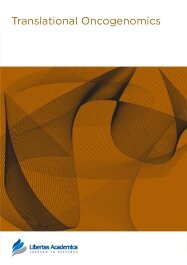

Publication Date: 23 Nov 2006
Journal: Translational Oncogenomics
Citation: Translational Oncogenomics 2006:1 33-52

Background: Potassium bromate (KBrO3), used in both the food and cosmetics industry, and a drinking water disinfection by-product, is a nephrotoxic compound and rodent carcinogen. To gain insight into the carcinogenic mechanism of action and provide possible biomarkers of KBrO3 exposure, the gene expression in kidneys from chronically exposed male F344 rats was investigated.
Methods: Male F344 rats were exposed to KBrO3 in drinking water for 52 and 100 wk. Kidneys were removed, frozen, and stored at –80ºC, then used for Affymetrix microarray analysis. Gene expression patterns were examined using a non-carcinogenic (20 ppm) and carcinogenic dose (400 ppm) at 52 wk, and compared to 100 wk high dose (400 ppm) and adenoma gene expression.
Results: Statistical analysis revealed 144, 224, 43, and 994 genes out of 15866 from the 52 wk low, 52 wk high, 100 wk high, and adenomas respectively, were differentially expressed when compared to control kidneys. Gene ontology classification of the 52 wk high dose showed alterations of gene transcripts involved in oxidative stress, lipid metabolism, kidney function/ion transport, and cellular function. In a comparison of kidney development gene expression, alterations were seen in the adenomas but not in the 52 wk bromate-treated kidneys. However, the normal kidney from the high dose group resembled the adenoma expression pattern with early kidney development genes being up-regulated and adult phase genes being down-regulated. Moreover, eight genes were identified which could serve as biomarkers of carcinogenic exposure to bromate. The most promising of these was Pendrin, or Slc26a4, a solute carrier of chloride and iodide active in the kidney, thyroid, and inner ear. All these tissues are targets of KBrO3 toxicity. Expression array results were verified with quantitative real-time rtPCR.
Conclusions: These data demonstrate that the 400 ppm carcinogenic dose of KBrO3 showed marked gene expression differences from the 20 ppm non-carcinogenic dose. Comparison of kidney development gene expression showed that the adenoma patterns were more characteristic of embryonic than adult kidneys, and that the normal kidney from the high dose group resembled the adenoma-like gene expression pattern. Taken together, the analysis from this study identifies potential biomarkers of exposure and illuminates a possible carcinogenic mode of action for KBrO3.
PDF (1.85 MB PDF FORMAT)
RIS citation (ENDNOTE, REFERENCE MANAGER, PROCITE, REFWORKS)
BibTex citation (BIBDESK, LATEX)
XML
PMC HTML

As an author of a review published in Translational Oncogenomics, I was impressed by the prompt processing and speed of publication. The entire submission, review and publication process was easy, quick and pleasant. The comments from reviewers and associate editor were high quality, scientifically deep and objective. It was a great pleasure to cooperate with such qualified and friendly team. I highly recommend publication in Libertas Academica journals.
Facebook Google+ Twitter
Pinterest Tumblr YouTube